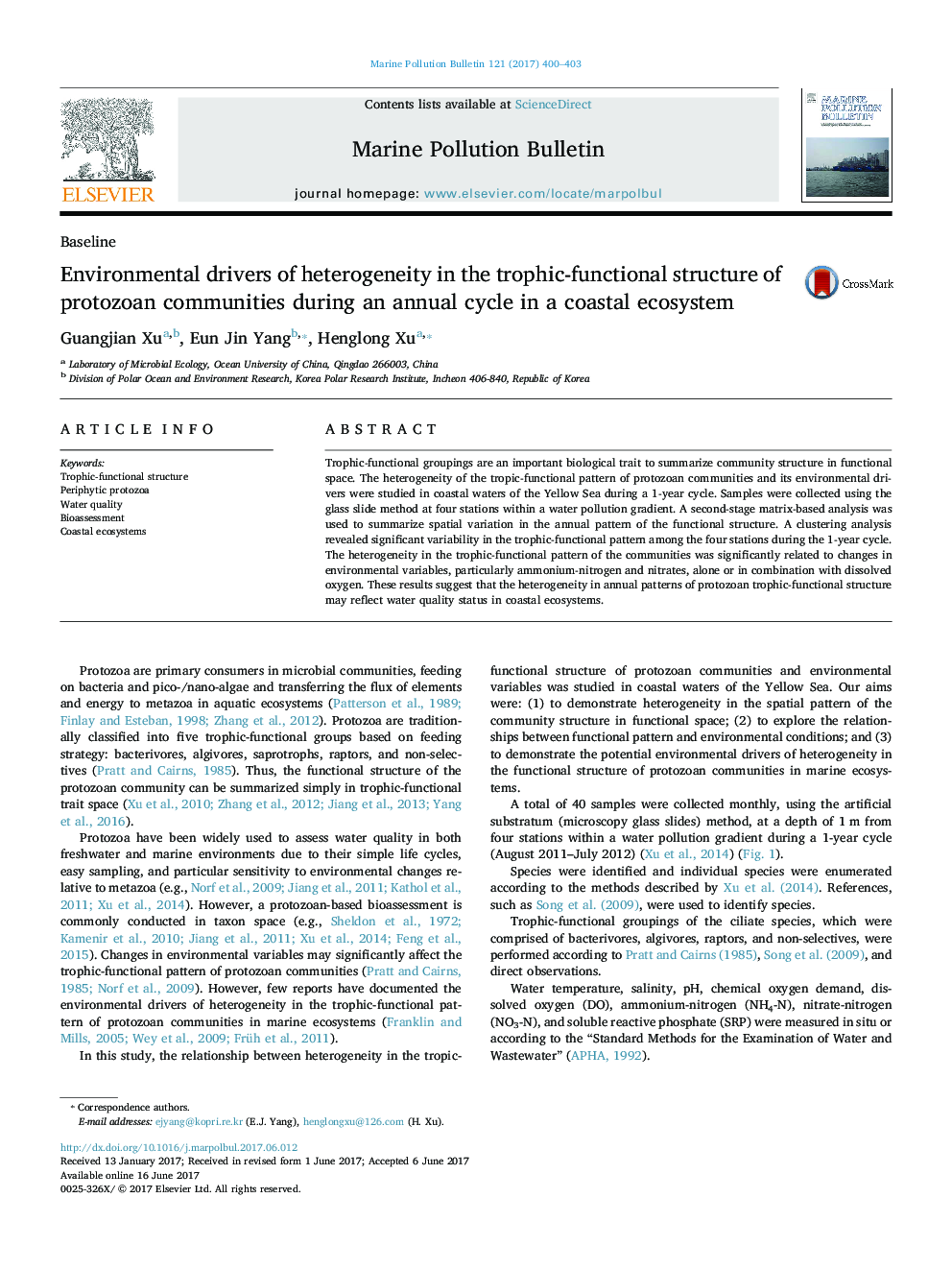| Article ID | Journal | Published Year | Pages | File Type |
|---|---|---|---|---|
| 5757334 | Marine Pollution Bulletin | 2017 | 4 Pages |
â¢The annual patterns of functional structure of protozoa showed clear spatial variations.â¢Spatial variations in functional structure were significantly related to nutrient variables.â¢Nutrients and dissolve oxygen may be the main drivers to shape the spatial differences.â¢Spatial pattern of functional structure of protozoa may reflect water quality status.
Trophic-functional groupings are an important biological trait to summarize community structure in functional space. The heterogeneity of the tropic-functional pattern of protozoan communities and its environmental drivers were studied in coastal waters of the Yellow Sea during a 1-year cycle. Samples were collected using the glass slide method at four stations within a water pollution gradient. A second-stage matrix-based analysis was used to summarize spatial variation in the annual pattern of the functional structure. A clustering analysis revealed significant variability in the trophic-functional pattern among the four stations during the 1-year cycle. The heterogeneity in the trophic-functional pattern of the communities was significantly related to changes in environmental variables, particularly ammonium-nitrogen and nitrates, alone or in combination with dissolved oxygen. These results suggest that the heterogeneity in annual patterns of protozoan trophic-functional structure may reflect water quality status in coastal ecosystems.
